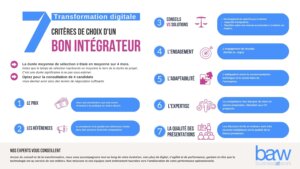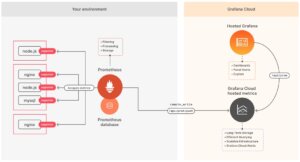Agility & IS Governance
Is agility spreading like a virus?
For the last 7 years, an acceleration of the deployment of the Agile spirit and “methods” can be seen. We can see a progressive and regular dynamic from year to year.
In the business world, agility has gone viral and is spreading primarily through word of mouth, although standards like the SCRUM “culture” or SAFe for agility at scale are becoming benchmarks, it does not seem to be driven by any particular lobby.
Many French companies are seizing on this trend, often under the impetus of the IT department, but also of the business and HR departments, which see it as a way of turning the company around in this new digital era, and of improving collaboration between the business and IT departments.
An idea of agility above all
At the project level, the “Agility” approaches are increasingly set against the “waterfall” or “V cycle” approach.
The aim is to integrate whati seems to be a concept in the minds of some into the exchange practices between the business and the IT department during the course of a project. However, it is clear that the DNA and “spirit” of agile practices are not always well understood, and too few people are aware of their true meaning.
This approach requires a stronger involvement of the business, a more collaborative approach. It no longer involves a transactional and submissive relationship, but a spirit of partnership with the IT department. It is a question of entering into a dynamic of experimentation in which it is accepted that the business is not ‘mature’ in the expression of its needs and that the IT expert is not completely ‘mature’ in his way of providing a solution.
Having an agile mindset also means allowing yourself to be less than perfect from the start, and thus being able to undo and redo as necessary.
Symbols of this agility
To accompany the deployment of these Agile approaches, new roles are emerging, the Agile Coach, the Product Owner or PO, or the Transformation Director.
In addition to digital tools such as TEAMs planner or Trello and many others many tools specific to this culture are appearing, such as Jira, which has become a reference tool for the total or partial management of a project in Agile mode, specialised tools such as IceScrum or TULEAP, governance tools such as Triskell (PPM/SEM management integrating the SCRUM and SAFe cultures), or even technical platforms such as Microsoft Azure Devops
Agility has also made it possible to strengthen facilitation techniques, such as the Design Thinking approach, which has become a reference for stimulating creativity sessions, the Kanban board, which makes it possible to facilitate actions, and the Stand Up meeting which has become an essential part of daily management rituals.
Going beyond the framework of a project
Some companies, more than a hundred in France, have chosen to try this adventure of transforming all or part of their organisation in a rhythm and dynamic of agility between departments.
Agility “at scale” is about extending the culture and its practices to the whole company, its roles, its operations and some of its values. Thus agility is no longer confined to the level of an isolated project, but to a programme, a global solution, or even to the portfolio of strategic initiatives of the company and its governance layers.
Deployed throughout the organisation, the system integrates its fundamental principles and values, making multi-discipline teams work together in a reinforced collaborative mode, and thus taking advantage of this collective and dynamic intelligence to create more useful value while ensuring the development of each individual.
The project phase is diluted and continues in the “RUN” phase, the rhythm is sustained, the business must organise itself to continuously feed the permanent teams to maintain and develop each link in the value chain step by step.
What impact on IS governance?
Paradigm change is difficult to extend to the whole company in the case of agility at scale, which requires change support over several years.
For many business decision-makers, “Agility” rhymes with “IT project methodology”, while the challenge is to move from a transactional system to a collaborative system, the IT department becomes a partner.
To achieve this cultural change, several key factors are necessary. The business needs to be more involved in implementation, its management of priorities and its operational decision-making as the project progresses. For this purpose, the work on needs, among others, is more intense (e.g. on user experience), which requires stepping back and setting up creativity workshops in which the business is strongly involved.
The new dynamic also implies the creation of stable teams combining business and IT experts who take charge of the entire life cycle of a “Product”, including its RUN aspects.
Thus the business must anticipate that it will have to devote more time than before to the implementation of projects, often in competition with its day-to-day operations. The deadlines of a project to be delivered become strongly dependent on the time that the business can devote to the project.
The business must also better understand and apprehend technological issues such as obsolescence and IT architecture options, and thus take responsibility for the structural choices of its IT. On the other hand, IS experts must be able to popularise their language, which is perceived as too technical, and better assimilate the business issues in order to instruct and guide the choices and priorities to be made.
General management such as obsolescence and IT architecture options, and thus take responsibility for the structural choices of Agile Mode. It must also understand the importance of this wealth of information, which sometimes becomes the core value of the company. Many new business developments in a company also take place through the sale of information gathered through its IS.
At Business AT Work we have been cultivating this culture of Agility for many years, and it is now part of our DNA.
Our consultants follow a path of increasing competence in the different practices, techniques and tools to better serve our clients.
Jean-Marc Dominici
Transformation Programme Director and Agility Expert



